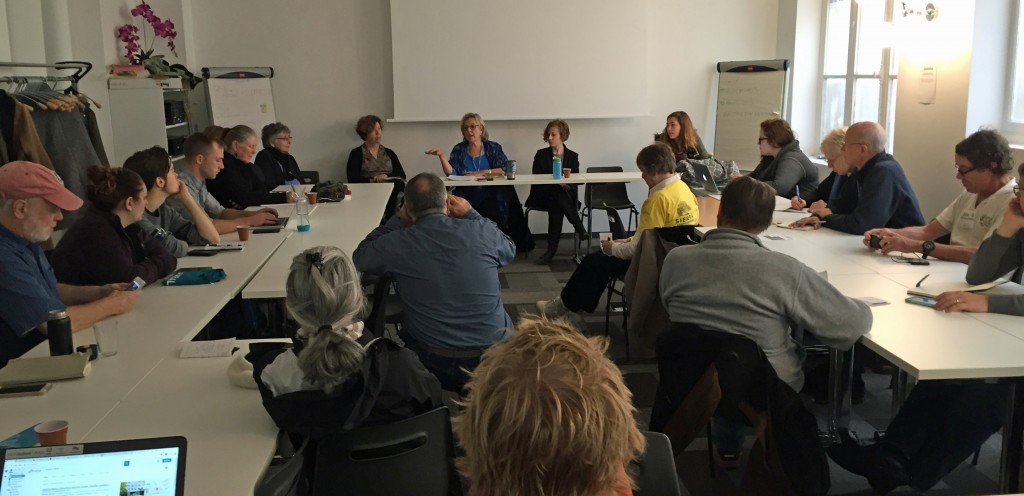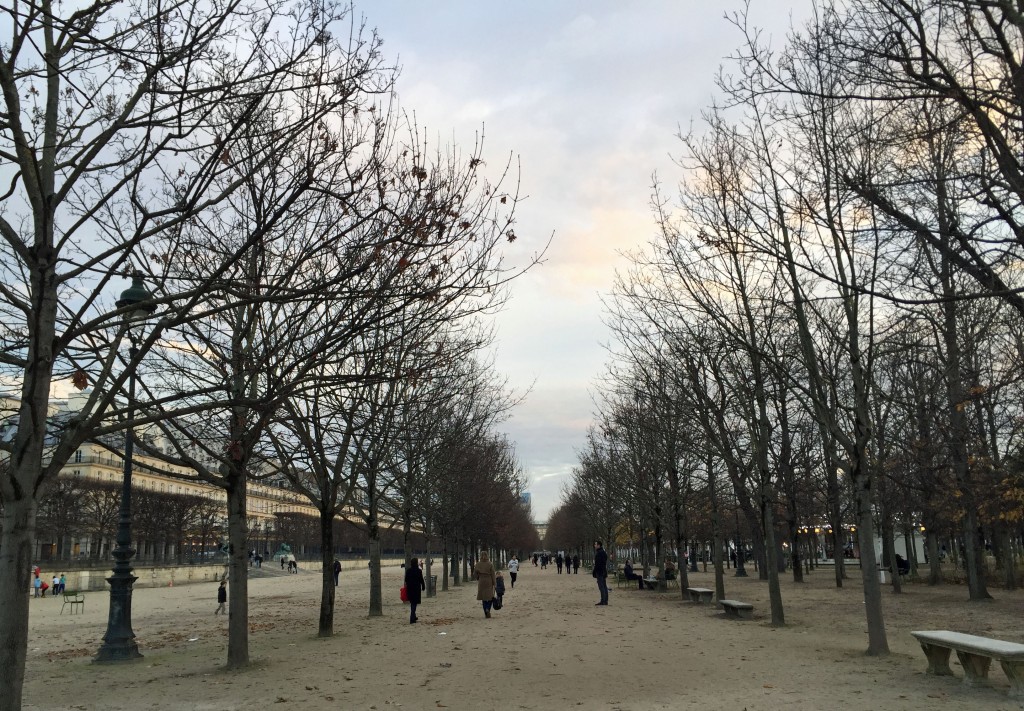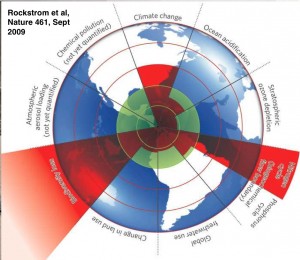Each day, Fred Heutte, lead volunteer for the Sierra Club’s Federal and International Climate Campaign, is providing updates about the day’s events at COP21, the Paris Climate Conference. I will reprint these in this blog with his permission.

Fred Heutte
FRIDAY, DEC. 4 — The Compilation Text becomes the Bridging Proposal
The conference resumed Friday morning with the issuance of a revised text and a new “bridging proposal” from the ADP co-chairs consisting of a reduced form of the text with some consolidated language. While the length didn’t decrease all that much, from 46 to 38 pages, there were fewer “brackets” — disputed parts of the text. A lot fewer, in fact — the brackets decreased from about 1700 to under 900.
In the past, whenever the COP president or ad-hoc co-chairs have presented a reduced form like this, there has usually been a long delay while countries and groups review whether their key options have been retained.
In October, when the ADP co-chairs put out a reduced text that removed a lot of options, there was an immediate outcry and most of the pieces were put back. But this time, after about a three-hour break, Parties were willing to try and move forward.

Sierra Club booth in the Climate Generations space.
Friday afternoon, they tried to do so in several stages. First, they began going through the text section by section. This lasted long enough for Parties to go on record on Article 2 — the human rights, just transition, gender equality and other elements broadly supported by civil society.
The co-chairs’ bridging proposal only retained the human rights and gender language but also copy-and-pasted the rest into the preamble — the position taken by the United States and Norway which got them (and Saudi Arabia for broader blocking) a Fossil of the Day from Climate Action Network.
Supporting the Article 2 language were the ABC countries — Argentina, Brazil and notably, Canada, which under the new Liberal government is a lot more responsive to the broad wishes of the Canadian public.
But the section by section review soon bogged down, and Parties agreed to state only key points they wanted added to the text. That also moved very slowly, and just when it looked like the session would go on all night, around 8 p.m. the ADP contact group agreed to adjourn for the evening and let the co-chairs prepare a “reflection note” summarizing all the requests for additions to the bridging proposal.
This was a remarkable and nearly unique development. The UNFCCC negotiations are renowned for going hours and days repeating existing positions, which may add to slightly better understanding of where countries stand, but often amounts to just marching in place. Because trust among countries has been so weak, especially since COP 15 in Copenhagen in 2009, there has been very little willingness to let session chairs move the text forward.
So these developments Friday evening signalled two things: the strength of the French presidency’s consultative approach and overall strategy for COP 21, and the universal recognition that with the clock running out, continuing long-established negotiating patterns finally had reached the end of the line.
2013-15 Review Not Adopted
One more important development happened Friday. In the separate closing plenaries of the SBI and SBSTA, there was a political defeat for vulnerable developing countries and their many allies including environmental NGOs.
AOSIS (small island states) and LDCs (least developed countries) have long advocated for a 1.5 degree C global temperature goal (roughly equivalent to 350 ppm), going beyond the 2 degree goal of the political statement in the Copenhagen Accords, later formalized at COP 16 in Cancun.
In 2010, after a major battle with Saudi Arabia and Kuwait, there was agreement to assess both the 2 and 1.5 degree targets in light of the emerging science, especially the Fifth Assessment Report of the IPCC issued in 2013-14. This was called the “2013-15 Review” and was conducted jointly by the SBI and SBSTA.
The Fifth Assessment Report concluded that 1.5 is still a possible outcome, if emission reduction efforts ramp up substantially and quickly, and a committee report reflected that conclusion. Since even a 2 degree global temperature increase would cause severe problems in vulnerable countries, and might result in abandonment of some small island countries due to storms and sea level rise, 1.5 degrees is the maximum reasonably safe level for many parts of the world.
However, Saudi Arabia (with support from other OPEC countries) blocked adoption of the 2013-15 Review, and the matter has been referred to the COP for possible action next week.
SATURDAY, DEC. 5 — The Bridging Proposal becomes the Draft Paris Outcome
Saturday morning, the big question was whether the ADP would have an agenda fight over the bridging proposal and the co-chairs “reflection note.” But in a very short ADP contact group followed by an ADP closing plenary, there were no objections to handing the package off to the COP, now labelled as the Draft Paris Outcome and consisting of the draft Paris Agreement and the draft COP decision.
And the ADP, the Ad-Hoc Working Group on the Durban Platform for Enhanced Action, went out of business and into history.
Again there were concerns about stalling or agenda fights, but when the COP plenary resumed shortly after 6 pm, it became clear that all groups were ready to move forward, and the Draft Paris Outcome now contains the texts for consideration by ministers over the next several days.
COP President Laurent Fabius got agreement to a simple structure for the negotiations through Wednesday or early Thursday:
- Four subgroups, each with co-chairs, one minister from the global South and one from the North:
- An “open ended contact group” informally called the Paris Committee, which will have at least a daily stocktaking meeting that will be on screens in the conference center but not on the Web.
- Finance and means of implementation (MOI), to be chaired by Ministers of Gabon and Germany
- Differentiation, especially as it relates to mitigation, finance and transparency, to be chaired by Ministers of Brazil and Singapore
- Ambition and Long-term Goal, Ministers to be decided (we learned Sunday one will be Catherine McKenna, the new environment minister of Canada)
- Pre-2020 sction (“Workstream 2”), though finance under WS2 to be discussed under Finance group, with Ministers to be decided
- Separate “legal and linguistic” technical committee to review the draft text on Wednesday and Thursday.
Fabius made it clear the COP presidency intends to finish the negotiations on the text Wednesday or Thursday morning at the latest, with the possibility of final “crunch issues” being decided at the top level while the text is going through legal review. That would lead to final adoption of the Paris Agreement Friday evening, if not precisely by the 6 p.m. official deadline.
That would be a near-miracle given the long history of UNFCCC meetings running late, later and very very late. But with an unambitious overall structure already pretty much locked in, the French presidency’s very strong, and political buy-in from the world’s leaders last week, it is a fairly possible timeline.
State of Play Dateline
[x] Sunday 29 ADP pre-plenary
[x] Monday 30 COP opening plenary – Leader Event
[x] Tuesday 1 COP/CMP joint plenary, SBI and SBSTA opening plenaries,
start of ADP contact group and spinoffs
[x] Wednesday 2 – Spin-Off Groups, ADP stocktaking
[x] Thursday 3 – Spin-Off Groups, ADP stocktaking
[x] Friday 4 – revised ADP text 8 am
[x] Saturday 5 closing ADP plenary, COP plenary
[x] Sunday 6 [COP 21 closed, informal consultations]
[ ] Monday 7 High Level Segment, Paris Committee
[ ] Tuesday 8 High Level Segment, Paris Committee
[ ] Wednesday 9, Paris Committee
[ ] Thursday 10
[ ] Friday 11 closing COP plenary
further info: phred@sunlightdata.com







































